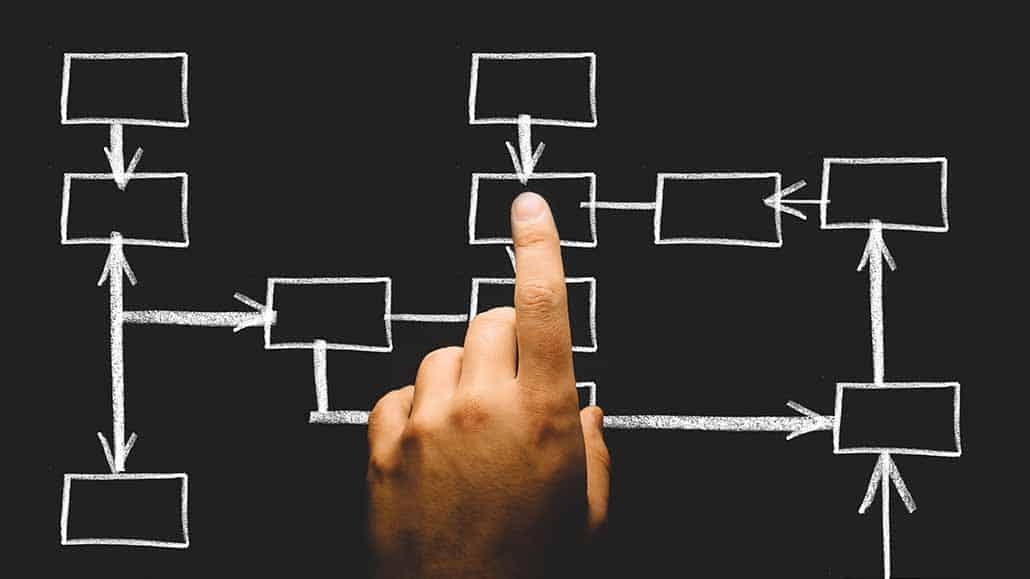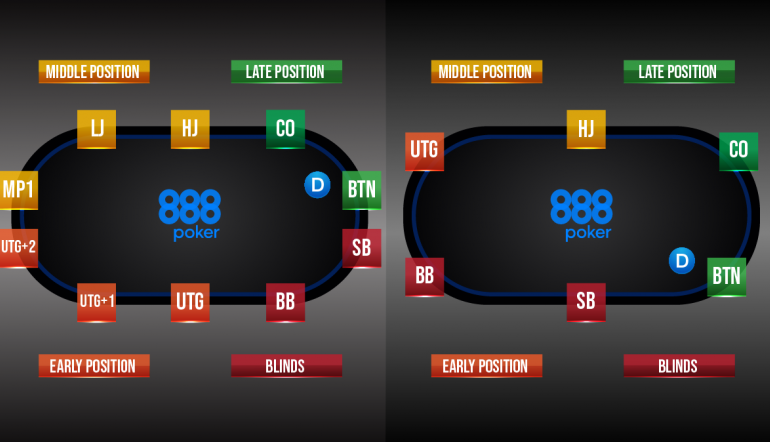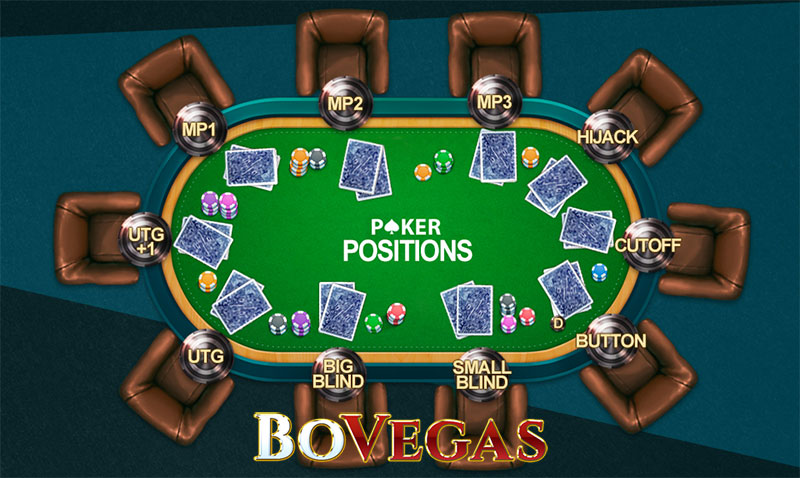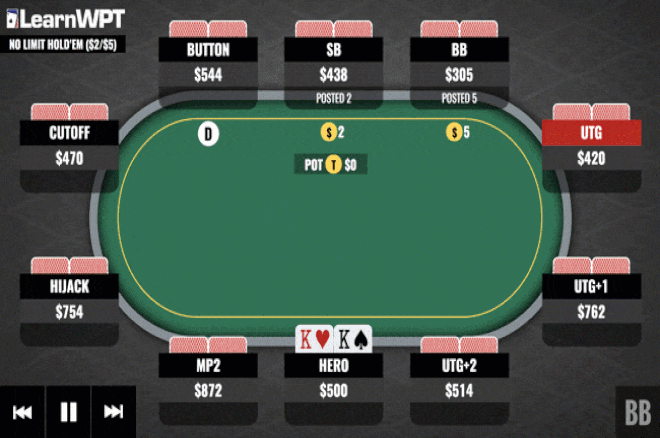Poker Term Hijack Position
Position in poker refers to the order in which players are seated around the table and the related poker strategy implications. Players who act first are in 'early position'; players who act later are in 'late position'; players who act in between are in 'middle position'.[1] A player 'has position' on opponents acting before him and is 'out of position' to opponents acting after him.[2] Because players act in clockwise order, a player 'has position' on opponents seated to his right, except when the opponent has the button and certain cases in the first betting round of games with blinds.
- Poker Term Hijack Position Tool
- Poker Term Hijack Positions
- Poker Term Hijack Position Meaning
- Poker Term Hijack Position Definition
After a while of playing poker, you are bound to learn all the essential terms, and even get some more advanced lingo added to your vocabulary. One of those advanced moves is of course, the “hijack seat,” a creative technique both praised by the beneficiary and loathed by those who play against it. Winning a big pot from the HiJack position against a flush draw. The positions that played before the hijack have already open raised their bets, so the hijack has to face those raises. The hijack is also the fifth player to play once the pre-flop is over, so any cold calls made by the hijack can be overcalled by the players who have played before.
Position in Texas hold 'em[edit]
The position after UTG is called middle position or the hijack (MP or HJ). The poker hand order played in this position is a bit wider than that from under the gun but still must be tight to compensate for the times called by the cutoff or button. A poker hands order that is profitable to open from the hijack is 22+, A8s+, QJs+, JTs+, ATo+, KQo. Due to the ambiguous opinion about hijack, the players among themselves nicknamed him 'raider' or 'hijacker'. Let's take a closer look at the features of the hijack position in poker. Imagine a table and distribute the positions of the players on it as follows: HJ takes the position MP3 (HJ) and is located to the right of the button for 2 steps.
The primary advantage held by a player in late position is that he will have more information with which to make better decisions than players in early position, who will have to act first, without the benefit of this extra information. This advantage has led to many players in heads-up play raising on the button with an extremely wide range of hands because of this positional advantage.[3] Also, as earlier opponents fold, the probability of a hand being the best goes up as the number of opponents goes down.
The blinds are the least desirable position because a player is forced to contribute to the pot and they must act first on all betting rounds after the flop. Although the big blind has a big advantage on the first round of betting, it is on average the biggest money losing position.[citation needed]
Texas hold 'em example[edit]
There are 10 players playing $4/$8 fixed limit. Alice pays the $2 small blind. Bob pays the $4 big blind. Carol is under the gun (first to act). If Carol has a hand like K♥ J♠, she may choose to fold. With 9 opponents remaining to act, there is approximately a 40% chance that at least one of them will have a better hand than Carol's like A-A, K-K, Q-Q, J-J, A-K, A-Q, A-J or K-Q. And even if no one does, seven of them (all but the two players in the blind) will have position on Carol in the next three betting rounds.
Now instead, suppose David in the cut-off position (to the right of the button) has the same K♥ J♠ and all players fold to him. In this situation, there are only three opponents left to act, so the odds that one of them has a better hand are considerably less (only around 16%). Secondly, two of those three (Alice and Bob) will be out of position to David on later betting rounds. A common play would be for David to raise and hope that the button (the only player who has position on David) folds. David's raise might simply steal the blinds if they don't have playable hands, but if they do play, David will be in good shape to take advantage of his position in later betting rounds.
See also[edit]
References[edit]
- ^'Poker Tables'. Carbon Poker. Retrieved 3 June 2014.
- ^'Poker Position'. CardsChat. Retrieved 3 June 2014.
- ^Badger, Steve. 'Changing Position in Poker'. Steve Badger Poker Strategy. Retrieved June 29, 2017.
External links[edit]
Position is one of the most important concepts in poker and is something that a lot of new players get completely wrong.
To put it simply:
Position in poker refers to the order which players are allowed to act. A player who acts first is “out of position” while a player who acts last is “in position”. Playing in position gives a distinct advantage due to the extra information gained and the ability to more effectively control the size of the pot.
There are two scenarios to discuss regarding position: preflop and postflop.
During the preflop round of betting, you can either be playing from early, middle, late position or the blinds with further breakdowns depending on your exact seat (which we will get into in a moment).

While postflop, your actual seat doesn’t matter and it becomes much simpler because you are either “in position” if you act last, “out of position” if you act first or somewhere in between if there are more than two players in the pot.
The important thing to remember is that these two aspects are related. When you play from an early position preflop, you are more likely to have to play out of position postflop. Whereas if you play a hand from late position you are fairly likely (or in some cases guaranteed) to be playing in position for the rest of the hand.
The fact that your starting seat determines whether you are more or less likely to be playing in position postflop is a very important factor that drives our opening strategy quite significantly.
Let’s dig deeper into this and find out what the positions are on the table and why understanding position is so important to playing winning poker.
Table Of Contents
- What are the starting positions in poker?
What are the starting positions in poker?
Each seat at the table is given a unique name which allows poker players to easily identify what hands they should be playing (more on that later) and how they might expect their opponents to play.
These seats are grouped into one of four categories:
- Early position
- Middle position
- Late position
- The blinds

The naming of the positions differs slightly depending on how many players are seated at your table, but let’s first take full-ring (9 handed) which is the most common casino format.
The image below shows the four categories we mentioned but also broken down further with the names of each seat.
In case you aren’t familiar with the acronyms, here’s what they stand for:
- UTG: Under the gun
- MP: Middle position
- HJ: Hijack
- CO: Cutoff
- BTN: Button
- SB: Small blind
- BB: Big blind
Early position
The first seat to act is referred to as under the gun and is located in early position. “Under the gun” is a term that means to be “under pressure to act” as in you are “being held at gunpoint”.
This translates to the analogy of the first seat at the poker table who is under pressure to make the opening decision of the freshly dealt hand.
On a full ring table with nine players in total, there are eight players waiting to act after UTG. So there is a strong likelihood that if you decide to play your hand, another player at the table will wake up with a premium hand.
Even if someone is dealt a mediocre hand and decides to play, you will be playing out of position on postflop unless they happen to be in the blinds.
Because of this, you must carefully select what hands you wish to play.
To illustrate this a little further, let’s imagine we would like to open 66 from UTG. To some, this may be a fairly standard open.
But consider the probability of that any one of these players has a strong or premium hand of 77+, AJs+, KQs, AQo+, KQo
This range represents 7.5% off all hands, and the probability of a player having one of these hands is shown below:
| Number of players on the table | 1 | 2 | 3 | 4 | 5 | 6 | 7 | 8 |
|---|---|---|---|---|---|---|---|---|
| Odds of a player having 77+, AJs+, KQs, AQo+, KQo | 8% | 14% | 21% | 27% | 32% | 37% | 42% | 46% |
So there is almost 50% chance some has a hand that is at least flipping with 66 and in many cases dominating. Pocket 66s only has 37% chance of winning if you were to go all-in versus that range, however, you will realise a lot less of that equity due to the likelihood of high card to your pair making it very difficult to play.
Equity realisation is a complicated subject which I won’t go into detail here on but PokerNerve has a great article on the topic which you can read here.
So the key takeaway:
Moving clockwise around the table, the next player to act is referred to as “under the gun plus one” or UTG+1. This seat plays very similarly to the UTG and hence these two positions are grouped into early position poker strategy.
Since there are only seven players left to act when opening from UTG+1, you can play slightly more hands. A typical opening range on a full ring table will be approximately 9% from UTG and 10% from UTG +1 which looks something like this:
These images are from a piece of software called Equilab which you can download for free here. This software allows you to save your ranges for later, turn percentage opens into actual hand ranges and calculate your equity versus another hand or range.
Poker Term Hijack Position Tool
Middle position
The next position category is middle position. From here you should still be playing fairly conservatively, however, you can open a few more combos of hands when compared to UTG since two players have already folded meaning it is less likely:
- That you will come up against a strong hand
- That you will be forced to play out of position postflop
MP+1 should also be played in a similar manner to MP, albeit with slightly looser starting hand requirements.
A typical opening range will be approximately 12% from MP and 16% for MP +1 as shown below:
Late position
Following MP is late position which represents the three seats of hijack, cutoff and button.
We use individual names for each of these positions since they play quite differently and as a result, there is quite a large difference in strategy needed.
Poker Term Hijack Positions
Although this might seem like a lot to take in at the moment, with all the different seat names and acronyms, you will have no problem remembering once you get in some practice. It completely automatic to me now and I don’t even have to think about it.
Hijack will play more hands than MP with a 19% opening range but it’s not until the cutoff and the button where we really start to open our range up. For example, in the cutoff we will like to open 26% or so of hands whereas on the button (OTB), we will open closer to 45% of hands if you are facing suitable players in the blinds.
Here is what the button opening rang might look like:
The reason for the stark adjustment in starting hands is because there are so few players left to act (either 3 for the cutoff, or 2 for the button) and if we do get action, we will be in position against the blinds.
Due to the fact that you will always act last on the button when playing postflop, it is considered the best and is almost always the most profitable seat on a poker table.
Poker Term Hijack Position Meaning
The blinds
The blinds are a slightly different kettle of fish. Firstly, players in the blind have to put in a small “fee” before seeing their cards i.e. there are putting in money blind into the pot, hence the name.
Secondly, when playing from the blinds, you will mostly be reacting to other player’s raises as opposed to make them yourself. This forces you to use a different strategy than we have been using up until now – you must now start calling much more often, particularly from the big blind.
The Small Blind is the worst seat (as you will always act out of position and act with the least amount of information) and the Big Blind is the least profitable seat on the table as you have to put a whole big blind into the pot without even seeing your cards.
The two redeeming qualities of the big blind are that we already have 1 bb invested into the pot which means despite our positional disadvantage versus all seats except the SB, we will usually have the opportunity to “close the action” by calling and seeing the flop.
Closing the action means that we are guaranteed to realise some of our equity (potentially allowing us to hit a piece of the flop). The same can’t be said for the SB where if we call a raise, the Big Blind has the opportunity to reraise us with a squeeze and put us in a tough spot.
6-max tables generally play much more aggressively and in many ways can be thought of by just simply removing the first three seats from a full ring table.
Poker Term Hijack Position Definition
However, the naming convention also changes somewhat i.e. the first player to act in a 6max table is still called under the gun (and not MP+1 as would be the case in a full ring table).
The naming convention for a 6max table is shown below.
For the difference between a fullring and 6max table strategy, see my article here on this topic.
Note that in a 10 handed table there is also an UTG+2 added before MP starts. In this case, UTG should play slightly tighter and on a 9-handed table.
Poker Position Hand Chart:
Here is an example of how we would play pairs in a 6max game:
As shown, we should almost always play pairs since they are one of the best starting hand types. But with the other hand types, it is less cut and dry.
To receive your full free 6max & full ring starting hand chart, Click here for 6max and here for fullring.


Check out the Common Poker Mistakesto keep learning.
Or return to poker 101?